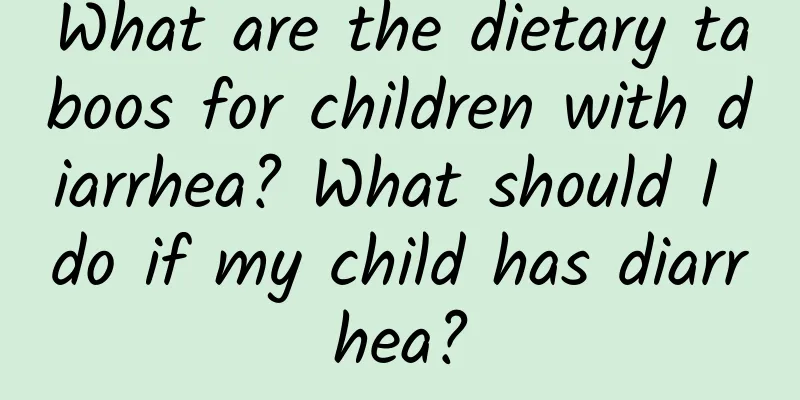Master the six key points in caring for babies with jaundice. What are the symptoms of neonatal jaundice?

|
In medicine, jaundice in newborns under one month old (within 28 days of birth) is called neonatal jaundice. Neonatal jaundice refers to a disease characterized by jaundice of the skin, mucous membranes and sclera due to abnormal bilirubin metabolism in the neonatal period, which causes increased bilirubin levels in the blood. This disease can be divided into physiological and pathological types. Symptoms of neonatal jaundice Symptoms of physiological neonatal jaundice include: Newborns develop yellowing of the skin, whites of the eyes, and oral mucosa on the 2nd to 3rd day after birth, with varying degrees of severity. It is usually more obvious on the face and chest, but not on the palms and soles of the feet. It is most obvious on the 4th to 6th day, disappears on the 10th to 14th day after birth for full-term infants, and can persist until the 3rd week for premature infants. During this period, the child is generally in good condition and has no other discomfort. It is normal for newborns to have physiological jaundice, but parents should also pay close attention to observation. Generally speaking, physiological jaundice is relatively mild, the bilirubin concentration in the blood is low, and it will not affect the intelligence of children. Symptoms of pathological jaundice include: Jaundice in children may occur within 24 hours after birth, or it may persist, or jaundice may reappear after it subsides, or jaundice may progressively worsen. Pathological neonatal jaundice can also cause manifestations of other diseases, such as kernicterus. When it occurs, the jaundice in children becomes significantly worse, and they begin to show symptoms of drowsiness, weak sucking or choking, and decreased muscle tone. If not treated in time, serious symptoms such as groaning, screaming, convulsions, and respiratory failure may occur. Some children die of respiratory failure, and those who survive often have sequelae such as intellectual disabilities and cerebral palsy. How to care for neonatal jaundice 1. Observation of the baby's systemic symptoms Pay attention to observe the systemic symptoms of babies with fetal jaundice, such as lethargy, drowsiness, difficulty sucking, restlessness, strabismus, limb rigidity or convulsions, so as to detect and treat seriously ill children early. 2. Protect babies Pay attention to keeping the baby's skin, navel and buttocks clean to prevent damage and infection. 3. Observe the baby's changes Closely monitor heart rate, heart sounds, anemia level, and changes in liver size to prevent and treat heart failure at an early stage. 4. Pay attention to your diet during pregnancy Fetal jaundice is often caused by the pregnant mother being invaded by dampness and heat, which affects the fetus, resulting in fetal jaundice after birth. Therefore, during pregnancy, the pregnant mother should pay attention to a moderate diet, not eating raw or cold food, not being too hungry or too full, and avoid alcohol and spicy and hot foods to prevent damage to the spleen and stomach. 5. Pay attention to the baby's jaundice Closely monitor the baby's scleral jaundice after birth. If jaundice is detected, treat it as soon as possible, and observe changes in the color of the jaundice to understand the progress of the jaundice. 6. Be prepared When exchange blood therapy is needed, the air in the ward should be disinfected in time, blood and various medicines and items should be prepared, and the operation should be strictly followed. |
<<: How to treat newborn jaundice? Why do babies have jaundice for different lengths of time?
Recommend
What foods can't the mother eat after the baby has eczema? Four types of food that the mother is forbidden to eat
During the period of eczema in infants, breastfee...
Do you know the common misunderstandings in the diagnosis of Kawasaki disease?
What are the common misunderstandings in the diag...
Best recipes for diarrhea in children
Many children are prone to diarrhea due to poor g...
Causes of high neonatal jaundice
1. There are too many red blood cells in the newb...
What are the precautions after Kawasaki disease surgery?
Kawasaki disease is a common pediatric disease, s...
How about children's cough syrup? What are the effects of children's cough syrup?
For every family, taking care of children is an i...
Is muscular dystrophy a genetic disease?
Patients with muscular dystrophy mainly show symp...
What are the symptoms of polio around 20 years old?
Patients in their 20s with polio should usually s...
What to do if your child has a cough and fever
When a child has a cough and fever, you can reaso...
Is patent ductus arteriosus serious in children?
Patent ductus arteriosus in children is a congeni...
How to choose a good hospital for polio
Polio is an acute infectious disease with a very ...
How to improve the cure rate of pneumonia in children
I believe everyone should be familiar with the di...
Typical symptoms of diarrhea in children
Infants and young children are a vulnerable group...
What are the 5 common symptoms of pneumonia in 9-year-old children?
A 9-year-old child with pneumonia developed sympt...
What should I do if my five-month-old baby has a cough? What are the methods to relieve the cough of a five-month-old baby?
If a five-month-old baby has a little cough, it m...









